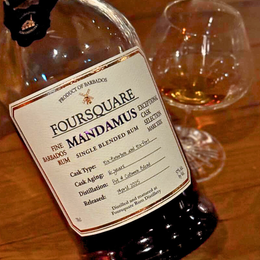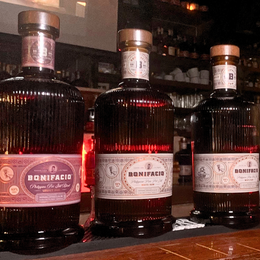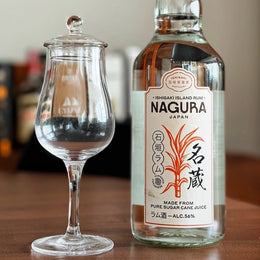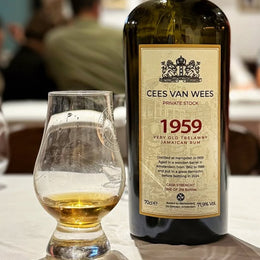Transcontinental Rum Line, Australia 2015, Beenleigh Distillery 4 Years Old Rum, 48% ABV (Part 3)
Editor's note: This is the final Part 3 of Jigs' 3-part series on Transcontinental Rum Line (TCRL). Jigs continues his conversation with La Maison & Velier's TCRL brand manager Johann Jobello, and reviews a single rum from Australia's Beenleigh Distillery. Also check out Part 1 and Part 2 of this series.
TCRL should be applauded for their intent on maintaining their dedication to their own branding and business goals yet also honoring and supporting contemporary movements toward diversity, inclusivity, transparency, and sustainability – movements that, I believe, are crucial for the growth of the category.

Johann Jobello, the brand manager of Transcontinental Rum Line, has consistently emphasized that one of the key principles of the brand is its desire to recognize and celebrate rum’s diversity. In this third and final installment of my series on TCRL, I share the rest of my conversation with Johann and conclude with a review of their bottling of an Australian rum.


Bottle label photo courtesy of expert24.com.
Transcontinental Rum Line Australia 2015 - Review
This is a release of a molasses-based pure single rum (using the Gargano classification) or a single traditional pot still rum (using The Whisky Exchange’s classification system) distilled in 2015 by Beenleigh Distillery. It was aged for two years in Australia before being aged for an additional two years in the UK. It is bottled at 48% strength.
Color: Caramel.
Nose: The first impression is of asphalt and muesli. It seems unchanging at first, but it eventually opens up and develops into a blanket of subtle aromas: star anise, latex, light cookie butter biscuits, and bubble gum.

Surprisingly, fresh fruit shows much later on, particularly strawberry skins and fuji apples.

Palate: Much more flavorful compared to the nose. The arrival starts similarly – with asphalt and toasted oats – before it follows a thread of brine that weaves through macadamia nuts, capers, straw, periodic touches of apple seltzer, and the surface of a glass of horchata topped with cinnamon (Note: horchata is a popular milky Spanish drink resembling a sweet rice milk beverage often added with vanilla). Lots of umami flavors among a general restrained sweetness. Medium-bodied.

Finish: Mouthwatering and long, touching upon nuts, cinnamon, and oats.

This is one of those rums that actively reminded me to pause and wait. It isn't the most complex rum, but I enjoyed the fact that it rewarded me with new aromas and flavors over time. Of course, this can simply mean that my palate slowly become aware of new flavors after acclimating to others, but I find it valuable that the initial flavors were rich and engaging enough to convince me to see which ones would follow over time. The development through oxidation certainly does not render the wait meaningless. I bought this rum for around $57 dollars, which is not a bad price at all.
Final thoughts on TCRL:
On the packaging of TCRL’s core range releases, they write the following:
“Inspired by the rum casks’ historical trips between the New World and the Old Continent, the Transcontinental Rum Line highlights the fact that from the beginning of its existence, rum has always been shipped to Europe for nautical, economical, and technical reasons. Nautical, because it allowed to avoid the consumption of stagnant water during long transatlantic crossings. Economical, as the angels’ share is lower and the rum matures more smoothly. Technical, thanks to the diversity of barrels having previously contained wine, whisky, cognac, or other spirits, allowing for the creation of unique expressions.”
While the history of rum is rooted in Western colonialism and imperialism, these conditions nonetheless played a major role in the development of a diverse industry, one that now has many locally-owned distilleries and brands that seek to share and benefit from their own cultural products. I believe TCRL should be applauded for their intent on maintaining their dedication to their own branding and business goals yet also honoring and supporting contemporary movements toward diversity, inclusivity, transparency, and sustainability – movements that, I believe, are crucial for the growth of the category. Johann’s ideas clearly illustrate those commitments, conveying a strong sense of purpose that many independent bottlers seem to be missing. Add to that the quality of their rum, and it’s easy to join the ranks of those that anticipate their releases.

The Brown Dram
A Filipino living in Metro Manila, Jigs is a whisky and rum enthusiast. His passion for spirits has led him to develop interests in photography and, now, writing. Reach him and check out his work on Instagram @thebrowndram!







